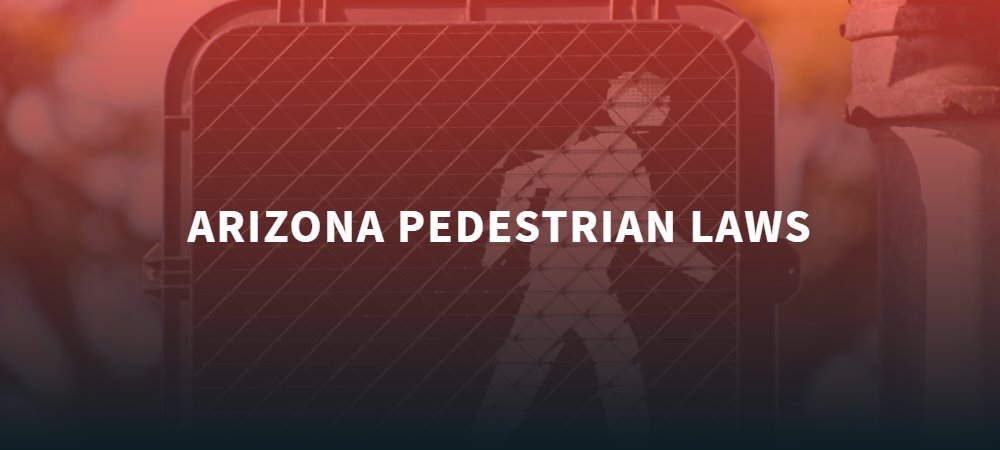
While it’s a common belief that pedestrians always have the right of way, Arizona law balances the safety responsibilities of both pedestrians and drivers. Like rules that govern vehicles and bicyclists, pedestrians must also understand their rights and obligations.
Drivers, too, are required to recognize their duties toward pedestrian safety. This guide will delve into Arizona’s pedestrian laws, clarifying right-of-way and liability in different situations, ensuring both walkers and drivers know what’s expected of them on the road.
According to a recent report by the Governors Highway Safety Association, Arizona had the second-highest rate of pedestrian fatalities in the nation in 2022:
Pedestrians are highly vulnerable in accidents, lacking protection against the significant impact of vehicle collisions. Unfortunately, fatalities can occur, and other injuries are often severe and life-altering. Our team of Arizona pedestrian accident lawyers has extensive experience assisting clients with claims for a range of injuries resulting from these accidents, including:
In light of these alarming statistics, it is crucial for pedestrians and drivers alike to exercise heightened awareness and caution on Arizona’s roads. At Torgenson Law, we are committed to advocating for pedestrian safety and working diligently to help victims of these tragic accidents pursue justice and compensation. If you or a loved one has been affected by a pedestrian accident, our experienced team is here to support you through every step of the legal process, striving to protect your rights and seek maximum compensation for your injuries.
When discussing pedestrian right-of-way in Arizona, it’s essential to understand the rules for sidewalks and crosswalks, as well as the relevant statutes that define these terms and their legal implications.
However, ARS § 28-793 states that if pedestrians cross at any point other than within a crosswalk, they must yield the right-of-way to all vehicles. Additionally, pedestrians should not suddenly enter a crosswalk in front of a vehicle that is too close to stop safely. This is crucial as it acknowledges that drivers may not always be able to stop immediately due to speed or other factors.
These statutes highlight the shared responsibility between pedestrians and drivers, but they also create the potential for ambiguity and disputes in accident cases. An experienced Arizona pedestrian accident lawyer can skillfully navigate these legal intricacies, effectively advocating for injured pedestrian rights. At Torgenson Law, with over 20 years of experience, we thoroughly understand and apply these laws to make a critical difference in the outcome of our clients’ cases.
While most discussions about pedestrian safety focus on crossing streets, it’s equally important to understand pedestrian responsibilities when it comes to other roadway behaviors. In Arizona, there are clear regulations against standing in the roadway to solicit rides, business, or employment. Pedestrians must be vigilant beyond just crosswalks, ensuring they are aware of their surroundings and behaving safely at all times.
This includes walking facing traffic when no sidewalks are available, using reflective materials at night, and avoiding distractions such as using phones or headphones. Awareness and education about these rules are crucial, as they significantly enhance personal safety and compliance with local laws.
Pedestrians should also be cautious about their actions because they can be held legally responsible if their behavior leads to an accident. For instance, darting into traffic or failing to yield when required can not only endanger their lives but also impact their legal standing in any subsequent claims for damages.
Yes, a pedestrian can be at fault for an accident. While drivers are often held responsible for pedestrian accidents, there are situations where the pedestrian’s actions can contribute to or cause an accident. Here are some scenarios where a pedestrian might be found at fault:
In cases where a pedestrian’s actions contribute to an accident, determining fault can be complex and often involves examining the specific circumstances of the incident. Arizona’s comparative negligence law allows for the possibility that both the driver and the pedestrian could share responsibility for the accident.
This shared responsibility means that even if a pedestrian is found partially at fault, they may still be able to recover some compensation for their injuries, though the amount could be reduced by their percentage of fault. At Torgenson Law, we are experienced in navigating these intricacies to advocate for our clients’ best interests. We will conduct a thorough investigation so that all factors are covered, and our clients are set up to receive the most favorable outcome possible.
In Arizona, while you won’t find the term “jaywalking” specifically mentioned in state laws, the rules for how pedestrians should cross streets are clearly outlined.
Here’s a simplified breakdown:
In cases where a pedestrian’s actions contribute to an accident, the consequences extend beyond immediate safety concerns—they can also complicate legal claims for damages. If you are involved in such an incident, it’s essential to understand that your ability to recover damages might be affected by your adherence to traffic laws at the time of the accident.
At Torgenson Law, we understand that navigating these complexities requires a deep knowledge of both state and local laws. Our team has extensive experience in handling cases where pedestrians may have been partially at fault. We meticulously analyze the details of the accident to build a strong case that highlights mitigating factors and seeks to maximize fair compensation for injured pedestrians.
Proving liability in pedestrian accidents can be complex, relying heavily on Arizona laws and the specifics of the incident. The following steps are crucial for determining how damages are awarded, and compensation is allocated:
Immediately following an accident, it’s essential to collect as much evidence as possible. This includes taking photographs of the accident scene, gathering video surveillance from nearby businesses or traffic cameras, collecting contact information of witnesses, and obtaining a copy of the police report.
Familiarity with pedestrian right-of-way laws and local traffic regulations is crucial, as these will play a significant role in determining fault. Knowing statutes such as ARS § 28-792 and ARS § 28-796 can help clarify the responsibilities of both drivers and pedestrians.
To prove liability, it must be shown that the driver, pedestrian, or another party acted negligently or failed to adhere to traffic laws. For drivers, negligence can include speeding, failing to yield at a crosswalk, or driving under the influence. For pedestrians, negligence might involve jaywalking or entering traffic unpredictably. Establishing who breached their duty of care and how it directly led to the accident is pivotal.
Often, proving liability requires the insight of accident reconstruction experts who can analyze the evidence and determine the dynamics of the accident. These experts can provide testimony on how the accident occurred, which can be pivotal in a court case or insurance claim. Their analysis can offer an unbiased, detailed perspective that strengthens the argument for liability.
By following these steps and leveraging expert insights, a clear case for liability can be established, paving the way for rightful compensation for the injured party.
At Torgenson Law, navigating the aftermath of a pedestrian accident can be overwhelming and complex. We are dedicated to providing empathetic and expert support to guide you through every step of the process:
If you’ve been involved in a pedestrian accident, reach out to us online or by phone at 602-726-0747. We’re here to help you focus on your recovery while we handle the legal details.
